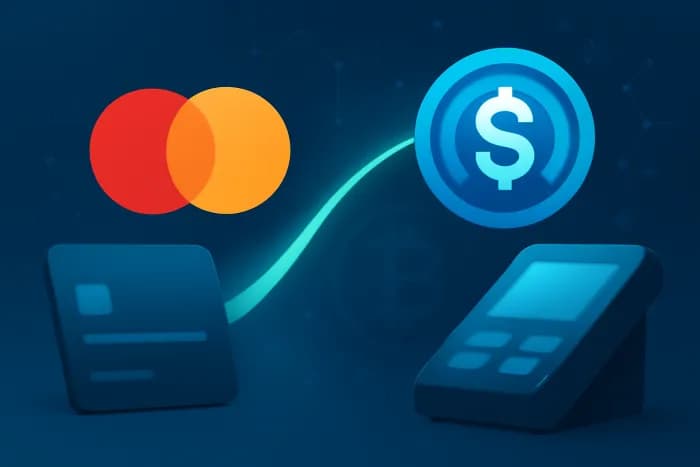Mastercard + USDC: How Stablecoin Rails Are Reshaping Global Payments

The Stablecoin Settlement Revolution Begins at Checkout
When a gig worker in Manila instantly receives USDC payments through a MoonPay-powered Mastercard, or a Brazilian merchant settles invoices with European suppliers without SWIFT delays, we witness the quiet disruption of global payments. Mastercard's strategic partnership with MoonPay marks the first large-scale test of stablecoin settlement infrastructure at payment network scale - with profound implications for transaction economics.
How the USDC Payment Rail Works: From Wallet to Merchant
The technical flow leverages three key components:
- API-Driven Conversion: MoonPay's Iron infrastructure automatically converts USDC to fiat at POS using real-time FX rates[1][2]
- Network Settlement: Transactions clear through Mastercard's network in hours vs days for traditional cross-border
- Merchant Payouts: Recipients receive local currency via existing banking partners
Compared to traditional card rails:
| Metric | Traditional Visa/MC | USDC Rail |
|---|---|---|
| Settlement | 2-5 days | <24 hours |
| FX Spread | 1.5-3% | 0.2-0.8% |
| Chargebacks | 1-2% of volume | Near-zero |
Source: Mastercard partnership disclosures[1][5]
High-Impact Use Cases Emerging
Cross-Border E-Commerce Shopify merchants can now accept USDC payments converted to local currency at checkout, avoiding 3-5% cross-border fees[2]. Early adopters report 40% lower payment processing costs.
Gig Economy 2.0 Platforms like Upwork and Fiverr are testing USDC payouts through MoonPay's API, enabling real-time earnings access for workers in 15+ countries with unbanked populations[1][4].
B2B Invoice Settlement The partnership enables "programmable payments" where smart contracts automatically release funds upon delivery confirmation, reducing counterparty risk in international trade[2].
Regulatory Tightrope: Compliance Meets Innovation
Mastercard's solution navigates regulatory challenges through:
- KYC/AML Integration: MoonPay's identity verification stack screens all wallet addresses
- Reserve Audits: Daily attestations of USDC collateralization via Circle's transparency reports
- Consumer Protections: Chargeback rights extended to stablecoin transactions[5]
This contrasts with Visa's USDC pilot in Latin America, which currently excludes high-risk jurisdictions[5].
The Network Effect Battle
While Mastercard/MoonPay targets mass-market adoption, competitors are advancing:
- Visa: Piloting USDC settlement across 6 LATAM countries
- PayPal: Expanding PYUSD integration with Xoom remittance service
- SWIFT: Testing CBDC interoperability through Project Sand Dollar
Industry analysts predict stablecoins could capture 15-20% of cross-border B2B flows by 2027, potentially reducing global payment friction costs by $120B annually[5].
The Ripple Effects: Interchange Fees to CBDCs
As stablecoin adoption grows, expect:
- Interchange Fee Compression: From ~2% to 0.5-0.8% as settlement risk decreases
- Loyalty Program Evolution: Tokenized rewards convertible to USDC in real-time
- CBDC Acceleration: Central banks likely to adopt similar rails for wholesale settlements
Mastercard's EVP Scott Abrahams summarizes: "We're building innovative connectivity between crypto and mainstream finance grounded by trust and scale"[1].
Ready to analyze the health and risks of payment-focused crypto projects? Explore TokenVitals' real-time analytics platform for deep liquidity insights, reserve audits, and network health scores.